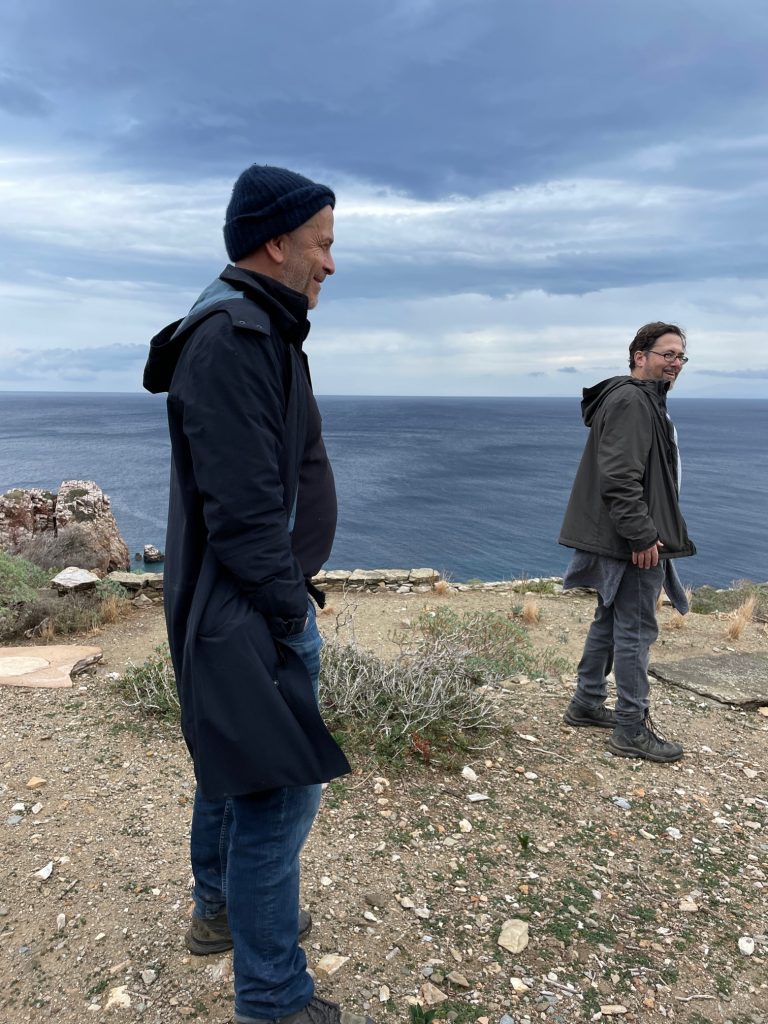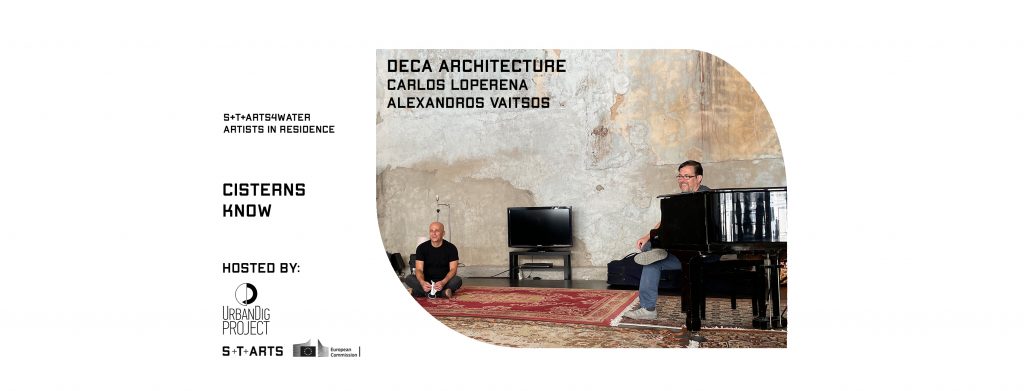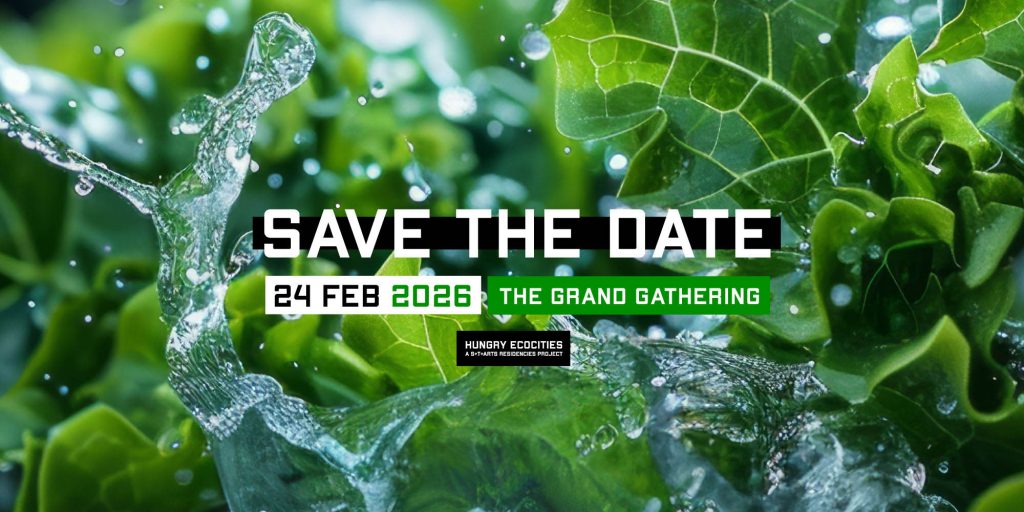Interview with S+T+ARTS artists-in-residency DECA Architecture for STARTS4Water challenge “Cisterns Know”- Learning from Poulati
Architects Carlos Loperena and Alexandros Vaitsos are two members of DECA Architecture collective that is stationed in Greece. They are the S+T+ARTS artists-in-residency for the Cisterns Know residency hosted by Ohi Pezoume/ UrbanDig Project. They welcome me warmly with a rich introduction of how the two met and reunited years after college. Back in 2001, Carlos was living in New York and Alexandros was in Athens, with plans on going to Japan. “We both, simultaneously, wanted a radical change. And a few weeks later, I was in Greece,” tells Carlos. And so the duo was formed.
“Ever since we met, we have been working together quite a bit: from creating installations to developing joysticks and from focusing on buildings to zooming in on landscapes. Things that really preoccupy us, are dealing with capacity and how to understand it,” says Alexandros. “How changes, like for example the seasons of the year, impact resources and infrastructure required to fulfill your needs. These matters have one common denominator: water.”
They stumbled upon the area of Poulati on the island Sifnos in Greece, which intrigued them for multiple reasons.
“One of the reasons was the enormous infrastructure that has been created throughout thousands of years, due to the hilly environment of the island. The farmers of Poulati created the steep slopes into flat plateaus, to be able to harvest and sustain themselves since the island had no connection to the mainland. Infrastructures like these are found on many islands in Greece. What made Poulati special is the existence of water springs. The infrastructure the stakeholders created also included a system of water management with open air cisterns and small aqueducts. These open air tanks gave the people of Poulati the advantage of transparency. With one glance they would know the capacity and volume of their water stock,” says Carlos.

Another reason why Carlos and Alexandros are so passionate about Poulati, besides the fascinating crafted adaptations to the landscape, is the imminent disappearance of this heritage. “There are only three farmers left. The oldest is 90 and the youngest 70.”
This project will focus on three components: first, the narrative of Poulati, where DECA will engage with the few stakeholders that are left. They will produce a short film to share this narrative and use a 3D printed model of the area of Poulati as their cinema screen.
Second is ‘the apparatus’, a model that allows other people to engage with the narrative. It enables you to observe the quantity and capacity of the tanks from a distance.
And thirdly, the interface: a programmed system to gather and exchange data about the cisterns on the island of Sifnos . On this simple website, visitors can find a map of Sifnos, and see where the registered cisterns are located and their capacity and current volume. Every visitor can add data, a cistern, to the map. This means everybody engages with the community, which at the end of the day makes the map more complete. And this, of course, benefits all parties.
In the near future, the collective will collaborate with water management experts, environmental engineers and topographers. When I asked when their research phase will end, Carlos answered: “it will never end. Why cut off your source of information when it’s that rich and abundant?”
Text: Goosje Leeuwenstein


